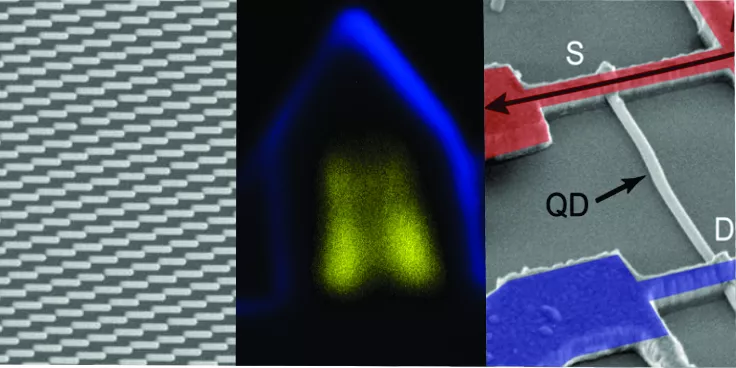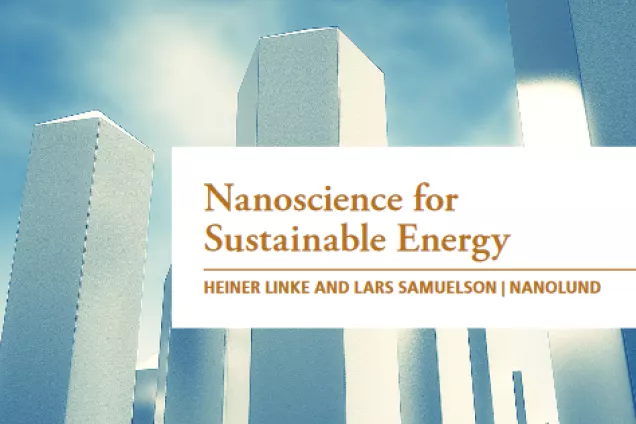Nanoenergy
The need for more efficient and sustainable methods for energy harvesting and conversion is one of Humanity’s greatest challenges. We aim to harness the unique electronic, photonic and structural properties of highly controlled nanomaterials to achieve high energy collection and -conversion efficiency with less material use.
Nanowire photovoltaics
Solar energy ~10 000 times today’s total global energy consumption impignes on Earth. Could we only convert a small fraction of all this energy to useful energy forms, our future energy supply is secured. Photovoltaics converts light to electricity and NW technologies have the potential to provide multi-bandgap materials otherwise not feasible and low material-consumption devices.
Solar energy conversion in molecular and hybrid systems
Molecular-based systems including organic semiconductors (pi-conjugated polymers), metal complexes, organic-inorganic perovskites and other hybrid systems are all of great interest for emerging solar energy conversion applications. Current interests include fundamental investigations of photoinduced processes in a range of applications toward both photovoltaic and photocatalytic applications that go beyond the traditional semiconductors used in most photovoltaics currently available on the market. To study, understand and optimize these systems we apply techniques from femtosecondlaser spectroscopy to single molecule spectroscopy and luminescence microscopy imaging and theoretical quantum chemistry calculations.
Nanothermodynamics
At the nanoscale, electrons and atoms perform random thermal motion and can be subject to quantum effects. Can we use the kinetic energy of electrons to do useful work? Can quantum phenomena make energy conversion more efficient? We combine experiment and theory to explore the fundamentals of generating electricity from heat or light, and the use of information to generate work.
Nanowire LEDs
Lighting and displays accounts for a major part of our energy consumption, and presently light emitting diodes are penetrating the market. A first political incentive towards developing more efficient devices was taken by abolishing incandescent lamps. However, much more efficient and longer lifetime lighting devices are present today, constructed by use of semiconductor based light emitting diodes. By employing NW technology, further improvement in efficiency, material consumption and material tuning can be achieved and the important application area of ultra-bright and high-resolution displays directly benefits by this nano-materials approach.
Power and RF electronics
The III-Nitride materials are considered a key technology in this area, enabling lower loss, improved performance and reduced costs in a wide range of applications, such as for efficient transformers, for electrical power transmission, and for electrical vehicle applicatoins. To reach the full potential of the III-Nitride materials, the ultimate solution is to grow device structures on native bulk substrates, but GaN substrates are prohibitively expensive and AlGaN substrates are not available.
Topical meetings
Topic: Nanothermodynamics
Date: Fridays
Time: 11:00-12:00
Place: k-space (Physics building)
Organizer: Lukas Hrachowina & David Barker
Topic: Optical physics and photonics
Date: Fridays
Time: 14:00-15:00
Place: k-space
Organizers: David Alcer & Aditya Saxena
Topic: Nitride
Date: Tuesdays
Time: 08:30-09:30
Place: k-space (Physics building)
Organizer: Zhaoxia Bi



